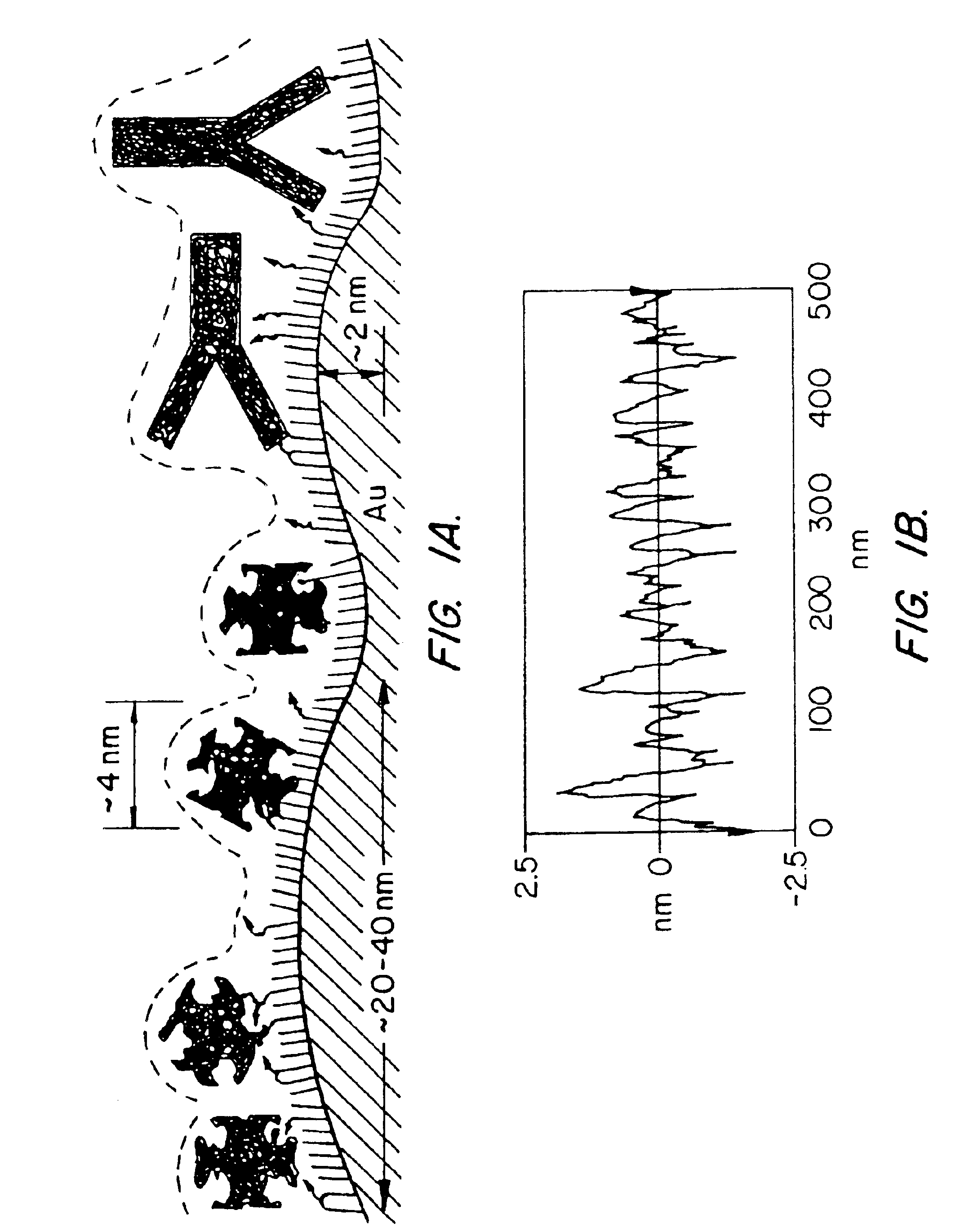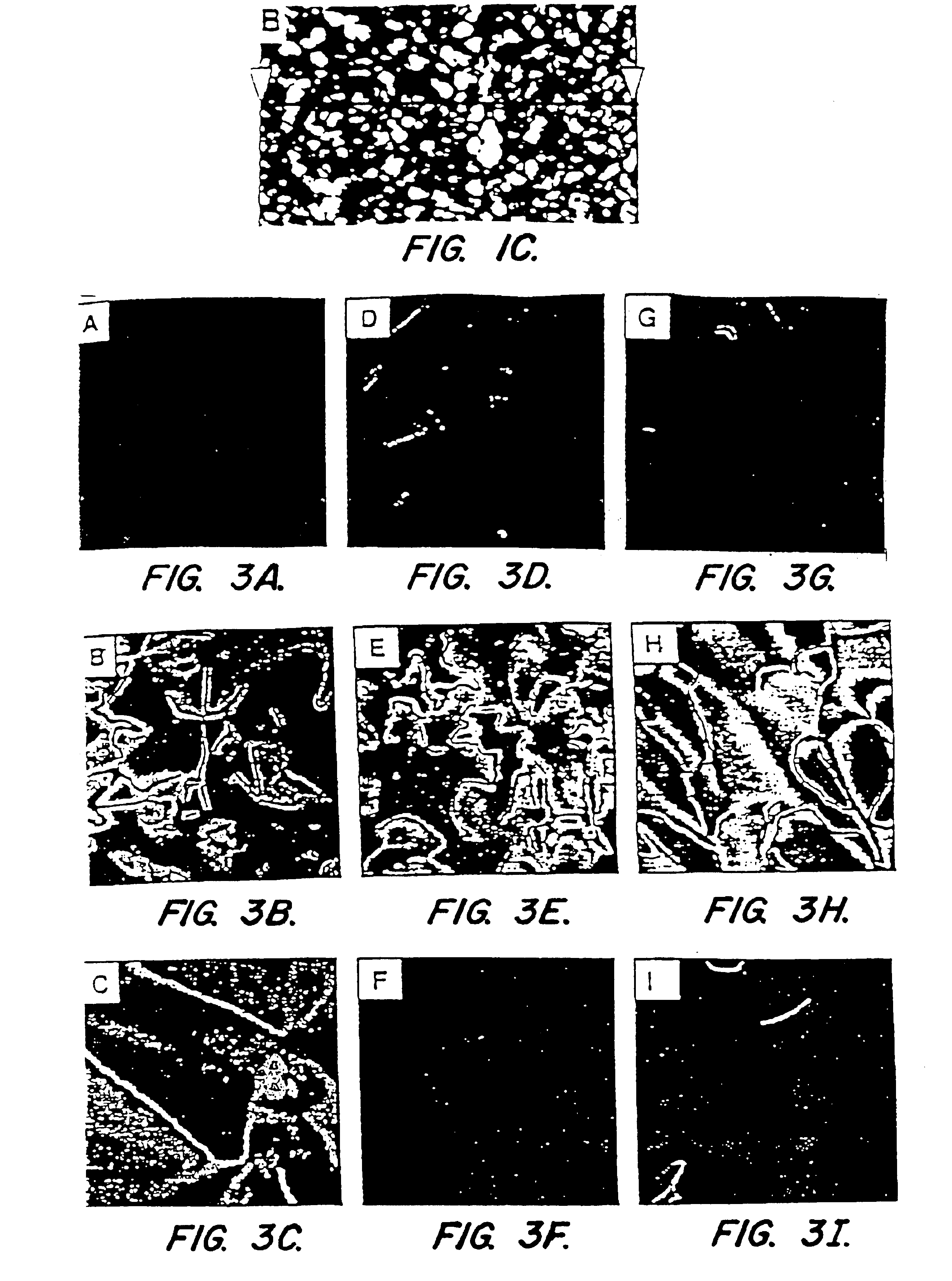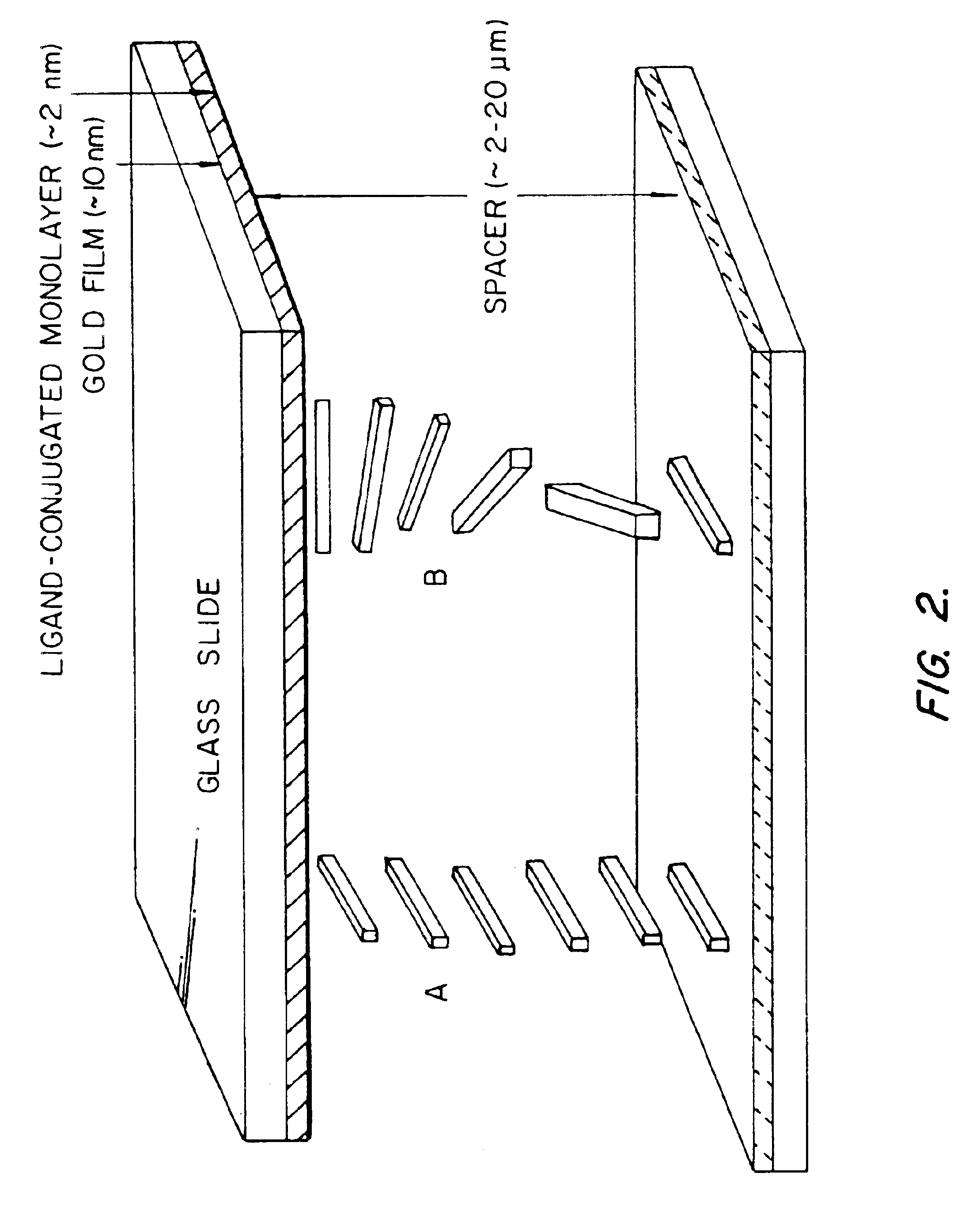Optical Amplification of molecular interactions using liquid crystals
- Summary
- Abstract
- Description
- Claims
- Application Information
AI Technical Summary
Benefits of technology
Problems solved by technology
Method used
Image
Examples
example 1
Example 1 illustrates the amplification and transduction into optical outputs of receptor-mediated binding of proteins at surfaces. Spontaneously organized surfaces hosting ligands were designed so that protein molecules, upon binding to the ligands triggered changes in 1- to 20-micrometer thick films of supported liquid crystals.
Surfaces were designed with nanometer-scale topographies that could be erased by the specific binding of a protein to surface-immobilized ligands (FIG. 1A), thus leading to macroscopic changes in the orientations of liquid crystals supported on these surfaces. First, thin films of polycrystalline gold were prepared (FIG. 1B) with roughnesses characterized by a maximum amplitude of ≈2 nm and a maximum wavelength of =50 run (FIG. 1C). The deposition of the gold films was controlled so as to introduce an anisotropic roughness within the films (called hereafter “anisotropic gold films (V. K. Guptaief al., Langmuir 12, 2587 (1996)). Although subtle, the anisotro...
example 2
The following example illustrates the use of a SAM functionalized with a carboxylic acid moiety to detect the presence of hexylamine vapor.
Liquid crystals supported on surfaces can be used to detect the presence of small organic molecules (e.g., airborne pollutants such as hexylamine) or ions (e.g., heavy metals). The following experiment was designed to explore the effect of a relatively simple, in situ change in the structure of a surface (i.e., transformation of a carboxylic acid into a amine salt) on the orientation of a supported liquid crystal.
The model system used comprised a 4-cyano-4′-pentylbiphenyl (5CB) liquid crystal supported on SAMs formed from HS(CH2)10COOH on obliquely deposited films of gold. n-Hexylamine was used as a model small organic molecule. The amine was introduced into the liquid crystal device in the vapor phase.
Experiments were performed to determine whether the reorientation of a 5CB liquid crystal supported on monolayers terminated with carboxylic acid ...
example 3
demonstrates that liquid crystals can be used to transduce into optical signals the transformation of a carboxylic acid group on a surface into a carboxylate salt Small changes in structure of surfaces are known to influence the bulk orientation of liquid crystals. A discontinuous, 90° in-plane reorientation of 5CB is observed depending upon the number of methylene groups composing an alkanethiol monolayer. An odd number of methylene units resulted in anchoring parallel to the deposition direction of the gold while an even number resulted in anchoring perpendicular to the deposition direction. The differences in orientation are attributed to the different orientations of the terminal methyl group within SAMs formed from even and odd numbered alkanethiols.
The acidity of the SAMs can be decreased using mixtures of HS(CH2)10COOH and HS(CH2)nCH3. Using this technique, the pH transition from uniform to twisted orientation was controlled by forming SAMs from a mixture of 1 mM 4:1, 2:1, 1:...
PUM
| Property | Measurement | Unit |
|---|---|---|
| Area | aaaaa | aaaaa |
| Interaction | aaaaa | aaaaa |
Abstract
Description
Claims
Application Information
 Login to View More
Login to View More - R&D
- Intellectual Property
- Life Sciences
- Materials
- Tech Scout
- Unparalleled Data Quality
- Higher Quality Content
- 60% Fewer Hallucinations
Browse by: Latest US Patents, China's latest patents, Technical Efficacy Thesaurus, Application Domain, Technology Topic, Popular Technical Reports.
© 2025 PatSnap. All rights reserved.Legal|Privacy policy|Modern Slavery Act Transparency Statement|Sitemap|About US| Contact US: help@patsnap.com



